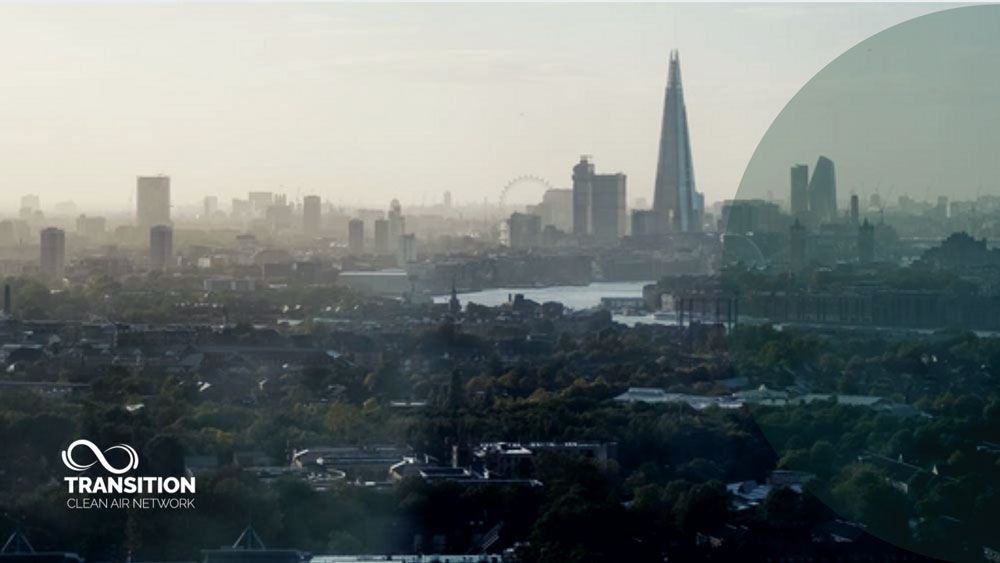The University of Birmingham-led TRANSITION Clean Air Network is funding five new research projects aimed at improving air quality by reducing harmful transport emissions.
TRANSITION, one of six Clean Air Networks funded by UK Research & Innovation, has awarded £48,000 to five innovative clean air research projects aimed at helping to shape the UK’s low-emission mobility revolution to deliver clean air solutions and help meet the government’s ‘net zero’ targets by 2050.
The five projects, led by both commercial and academic organisations, aim to: characterise changing travel patterns; measure exposure to pollution in different transport modes; progress real-time identification of pollution sources; reduce the emissions of pollutants from so-called ‘zero-emission’ vehicles; and minimise public exposure at the roadside.
It comes after the UK government last month announced it has set the world’s most ambitious climate change target into law to reduce emissions by 78% by 2035 compared to 1990 levels.
Dr Suzanne Bartington, TRANSITION Lead Investigator and Public Health Clinician and Environmental Epidemiologist at the University of Birmingham, said: “We are delighted to fund these innovative projects spanning UK road, rail and bus transport. The outputs will advance our knowledge, understanding and tools to reduce health harms of transport emissions.”
Professor Jon Fairburn, Professor of Sustainable Development at Staffordshire University, added: “In the year of the 2021 United Nations Climate Change Conference (COP26), these projects will provide new insights to resolve key issues surrounding transport emissions, and our exposure to these. As such these findings will provide policy makers with the evidence for developing a cleaner and healthier environment.”
The projects being funded by TRANSITION are:
Characterising Changing Travel Patterns in the COVID-19 era – led by Dr Fiona Crawford (University of the West of England)
Applying methods previously used in gene sequencing to number plates and vehicle registration data, Dr Fiona Crawford will generate insights into travel behaviour during the COVID-19 pandemic to provide insights into the air quality impacts of changes in working patterns and shopping behaviour (e.g., increasing home working and home deliveries).
Measuring Exposure in Different Transport Modes – led by Nick Molden (Emissions Analytics Ltd)
Focussing on ultrafine particles and currently unregulated pollutants, Emissions Analytics Ltd will measure differential exposure when opting to walk, cycle, drive*, catch a bus* or travel by train* (*comparing diesel and electric variants) on a commuter journey between Oxford and London.
Progressing Real-Time Source Identification– led by Gordon Allison (DustScan Ltd)
Enabling real-time air quality management at high spatial coverage, Dustscan Ltd will develop statistical techniques for machine learning to differentiate between construction dust and non-exhaust vehicle emissions using its new DustScan Cloud ‘low-cost’ air quality sensor, including on the HS2 Curzon Street site.
Understanding the Impact and Effects of Non-Exhaust Emissions (NEE) on human health and the environment – led by Jon Tivey (First Bus)
NEE from friction related elements of vehicles (namely particulate matter from brake, tyre and road wear) will remain in spite of a changing vehicle market from Internal Combustion Engine to electric propulsion (electric battery and/or hydrogen fuel cell). First Bus will engage vehicle and component manufacturers in a review of opportunities to reduce vehicle wear and associated NEE to inform future policy and regulation.
Minimising Public Exposure at the Roadside – led by Dr Fabrizio Bonatesta (Oxford Brookes University)
Focussing on roadside exposure to momentary peaks of air pollution from passing vehicles, Dr Fabrizio Bonatesta’s team will use state-of-the-art airflow simulation software to optimise bus shelter design for minimum air pollutant exposure. The study will be undertaken in collaboration with Oxfordshire County Council and Oxford City Council.
Of the project being led by Dr Bonatesta, Councillor Tom Hayes, Deputy Leader and Cabinet Member for Green Transport and Zero Carbon Oxford, said: “We know that air pollution is toxic and dangerous to our health. This exciting study will not only help us to learn more about air pollution generally in Oxford, but will also allow us to find out to what extent poor street furniture design can impact air pollution dispersion and aggravate people’s exposure to air pollution. I am looking forward to seeing the results of this research project.”

